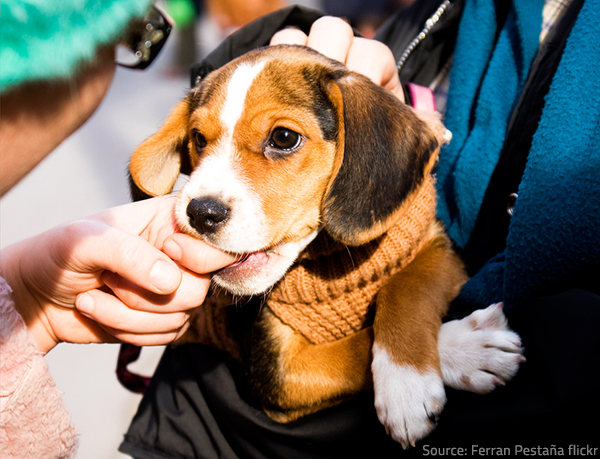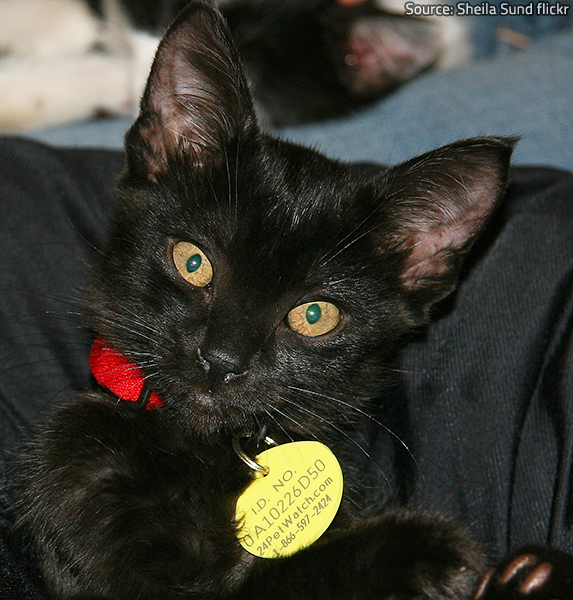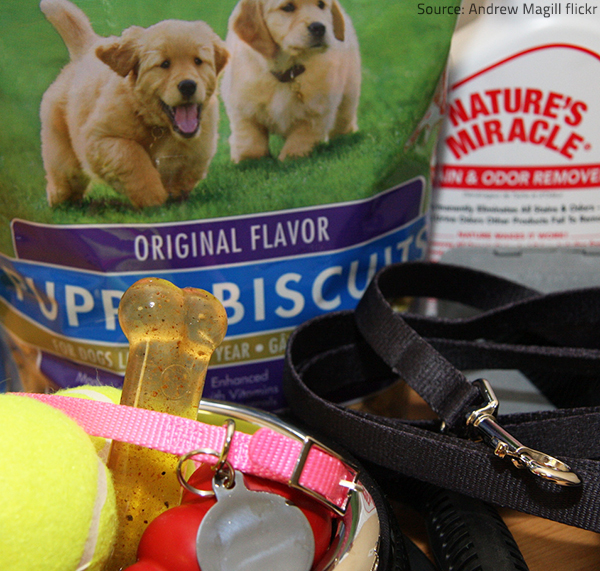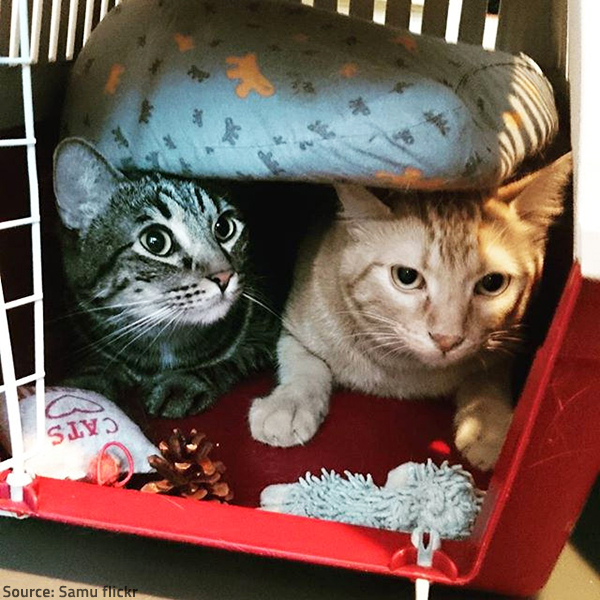Pet Disaster Preparedness Must-Haves

Your beloved animal friends can’t fend for themselves – it’s up to you to ensure their safety and well-being in the unfortunate event of a disaster.
When disaster strikes, there is no time to analyze the situation and think over the best course of action – you need to act quickly in order to escape the danger and ensure yours and loved ones’ safety. Making the right decisions, however, may be quite difficult in the ensuing panic – you need to know exactly what to do if you’re to succeed in keeping everyone in your household safe and sound. The better prepared you are, the higher the chance of making it through the disaster unharmed.
So, while there is little you can do to prevent an emergency, you should make everything possible to prepare for one. Your first and most important step is to create an efficient disaster preparedness plan – it will allow you to evacuate quickly, find adequate shelter, and last for a couple of days on your own. If you have pets, you need to include them in your emergency plan as well. Make sure you take adequate precautionary measures to guarantee your beloved animal friends’ safety and have everything necessary to ensure their comfort and well-being during the emergency period.
Make Sure Your Pets Have Proper Identification

“Here is everything you need to know to find my owner. Looking forward to the reunion…”
Providing your animal companion with reliable identification is one of the most important things to do as a pet owner – this simple step will ensure your reunion with your animal friend in case you get separated, whether it happens during an emergency or not.
You can use a collar ID tag (a physical tag attached to the collar your pet wears at all times) or a microchip (or, even better – both!) to ensure your animal friend’s proper identification. Make sure the information included in the chip and/or identification tag (your pet’s name, your phone number, your vet’s number, any urgent medical needs your animal companion may have, and at least one emergency number of a friend or relative who lives out of your immediate area) is correct and up-to-date.
Good to remember: Microchip identification provides the easiest and most efficient way to locate your pet (the chip cannot be lost and can be scanned at most animal shelters). Therefore, you’re strongly recommended to have your animal friend microchipped and registered in a national registry, as well as to keep the microchip registration up-to-date.
Prepare a Pet Emergency Kit
In order to reduce the risk to your pet’s life and health during an emergency, you need to have everything necessary for ensuring the well-being of your animal friend in the aftermath of a disaster. You’re advised to prepare a pet survival kit that contains all the essential items which will allow you to take good care of your animal companion during this difficult period. The comprehensive pet emergency preparednessPreparedness is the state of being ready to respond to emerg... More checklist below will help you not forget anything important when putting together your pet disaster kit:
- Five days’ worth of bottled water and appropriate pet food. It’s best to stock up on wet canned food – you won’t have to replace the food supplies very often, the food inside the can will be well protected from dust, dirt, and possible contaminants, and your pets won’t be very thirsty if they get moisture from their meal. Just don’t forget to pack a manual can opener as well;
- Feeding dishes and water bowls or any other adequate food and water receptacles;
- Disposable litter trays (such as aluminum roasting pans, for example) and plastic trash bags;
- Appropriate disinfectants, wet wipes, paper towels, and/or other appropriate hygiene products;
- An emergency medical kit that will allow you to take care of your animal friends if they get hurt (gauze to bandage an injury, hydrogen peroxide to disinfect a wound, etc.) and a week’s supply of your pets’ medicines (if any);
- A pet carrier or cage (labeled with your pet’s name and your contact information) to safely transport your animal companions;
- Sturdy leashes or harnesses (if applicable) to make sure your animal friends won’t escape if they get scared or disoriented;
- Copies of your pets’ medical and vaccination records, health certificates, etc.;
- Proof of ownership (photographs of you together with your pets and copies of important documents, such as adoption records, micro-chip numbers, registration information, proof of purchase, etc.);
- Recent photos of your pets, as well as temporary ID tags you can quickly fit your animal friends with if necessary;
- Comforting items – some of your pets’ favorite toys, blankets, etc.;
- Specialized pet items depending on the specific types of pets you have:
blankets or large towels to cover cages and keep them warm;
spray bottles to hydrate birds’ feathers and lizards’ scales;
heating pads for snakes and other reptiles;
bedding material for small rodents, etc.

Make sure you have everything necessary to ensure your pet’s health and comfort during an emergency period.
Good to remember:
- Store your pets’ emergency supplies in a water-proof container;
- Keep the pet disaster kit in a safe and convenient place you can easily access on your way out of your home during a forced evacuation;
- Replace the emergency food supplies at regular intervals to make sure they’re always fresh;
- Remember to check your pets’ medications and replace them at least one full month before their expiration dates.
Place Pet Alert Stickers on Doors and Windows
In the event of a disaster, a pet rescue sticker on the front door and/or a nearby window will alert people that there are live animals inside your home that may be in need of assistance. Make sure the sticker includes correct information about the types and number of pets in your property, their most probable locations, and your veterinarian’s phone number.
Good to remember: If you evacuate with your pets write EVACUATED across the pet alert stickers so that rescue workers don’t waste time looking for your animal friends.
Find a Pet-Friendly Place to Stay
Arranging a safe haven where you can house your animal friend in the event of an emergency is another important step of your pet disaster preparednessPreparedness is the state of being ready to respond to emerg... More plan. You need to find a safe place where you can stay with your pet until you can return home:
- Find pet-friendly hotels or motels you can stay at during the emergency period (ask in advance about any restrictions on the number, size, or species of animals they allow);
- Find out which of your friends and/or relatives (residing outside your immediate area) will be willing to house your pet in case of emergency;
- Locate appropriate pet boarding facilities – veterinary clinics, animal shelters, or boarding kennels that provide temporary care for pets.

Safe and sound!
The bottom line: Proper pet disaster preparednessPreparedness is the state of being ready to respond to emerg... More can mean the difference between life and death for your animal friends. If you prepare well enough, you have every chance to keep your family – including your beloved pets – safe and unharmed. Then, disaster recovery will be only a matter of time with adequate restorationRestoration is the process of returning a property to its pr... More assistance. The experienced restoration professionals in your area will help you get your life back on track in a quick and efficient manner and the disaster will gradually turn into a distant memory.












